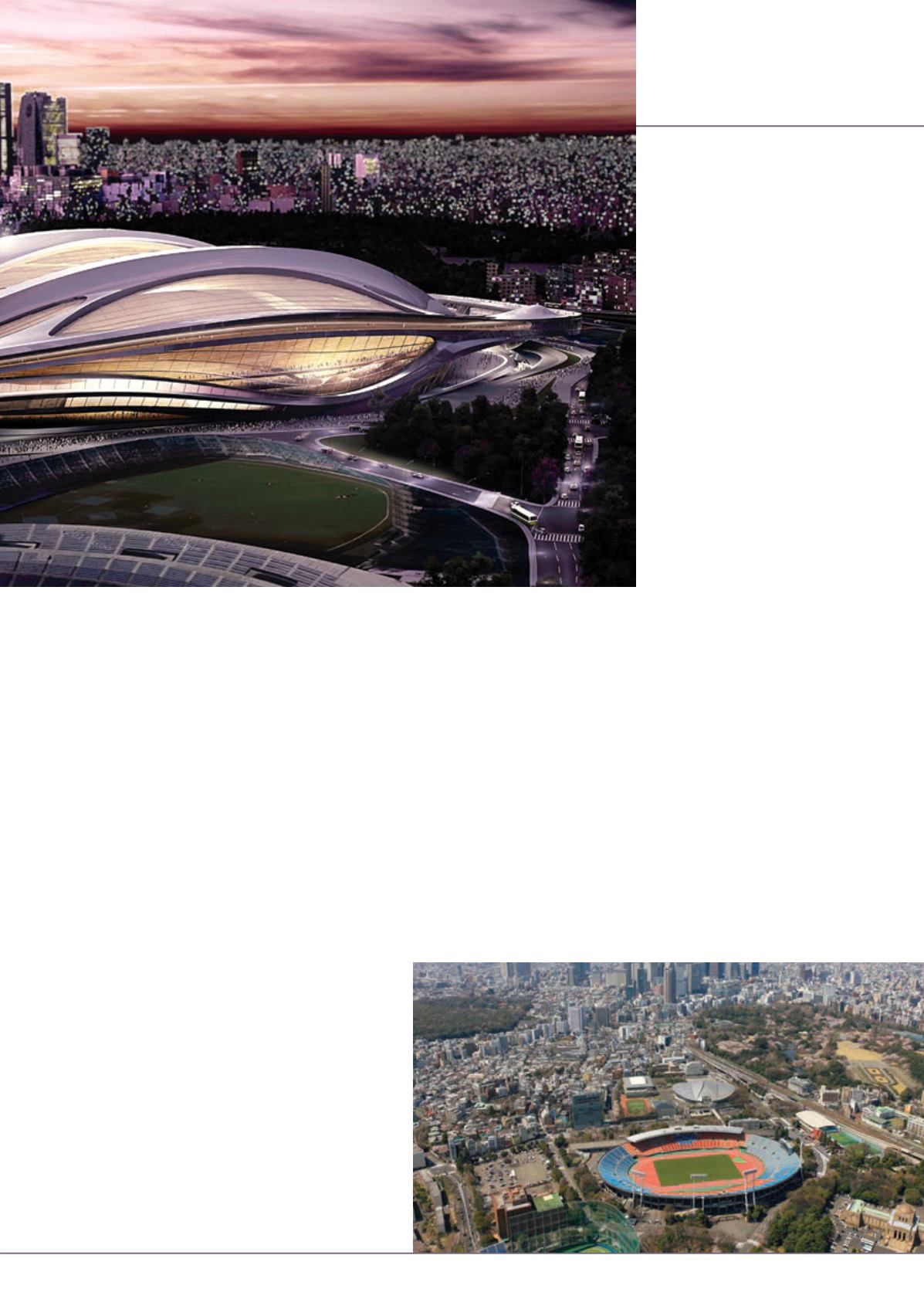
23
june 2014
international
construction
PROJECTREPORT
Japanese icon
a deadline ofNovember 25 that year.
Despite the challenging timetable, there was no shortage of
architects entering with their visions for what would clearly be
a high-profile and iconic project. The winner was UK-based
ZahaHadidArchitects, nodoubt spurredby the news ofTokyo’s
winning bid for the 2020 Olympics in September 2012. The
other cities in contention up to that point had been Madrid,
Spain and Istanbul,Turkey.
Stadium design
If Beijing had the Bird’s Nest stadium for the 2008 games,
Tokyo’s centrepiece venue stands a good chance of being nick-
named ‘The Cycling Helmet.’ The design features series of
shallow arches rising from outside the bowl of the stadium, with
translucentmaterials filling the voids between them to create the
fixed an open-able sections of the roof.
According to Mr Takasaki, the design is currently being
finalised ahead of the start of work on site later this year. The
first element of the project will be the demolition of the existing
national stadium and the contract for this, valued at around JPY
6.7 billion (US$ 65million) was due to be put out to tender as
iC
went to press.
The existing stadium is a substantial structure that escaped the
2011 earthquake unscathed, so its demolition looks set to be a
significant project in its own right. It is a five storey structure
built predominately from reinforced concrete.The total area of
the stadium, including track and in-field is 71,707m
2
, with the
stadium structure itself having a 33,716m
2
footprint.
Mr Takasaki said the demolition portion of the project was
scheduled for 16months, with a start date in July this year.That
work would carry on until October 2015, with the 42-month
construction phase due to follow-on
immediately.
With the start of the construction
portion of the scheme still well over a
year away, JSC is working to finalise
the designs. Mr Takasaki said the main
consideration was to decide between
the design as originally published, or a
“minimised version” which would be
cheaper and quicker to build, but which
would leave out some elements.
If everything runs to schedule, the
planned timescale would see the stadium
completed in February 2019, some six
to seven months ahead of the Rugby
WorldCup kick-off on September 6 that
year. The opening of the 2020 Summer
Olympics is due to take place on July 24
the following year, some 17months after
completion of the project.
According to JSC, the total budget
for the project is JPY 169.2 billion
(US$ 1.64 billion). The bulk of this
– some JPY 138.8 billion (US$ 1.3 billion) – is of course for
the construction of the new stadium. The remaining JPY 30.4
billion (US$ 295million) breaks down into the JPY 6.7 billion
(US$ 65million) for the demolitionwork and JPY 23.7 billion
(US$ 230million) for various environmental and development
work associatedwith the project.
Funding will come from a combination of national
Government funds, Tokyo’s City budget and a contribution
fromToto, the Japanese national sports lottery.MrTakasaki said
the size of the individual contributions were yet to be decided,
but added that the project was effectively underwritten by the
national government.
One of the biggest problems associated with the project is,
according to Mr Takasaki, the planning and flow of materials.
Tokyo is a famously large, dense and sprawling city, and the
logistical considerations are not helped by the fact that plans
need to be coordinated with the city government as well as the
three suburbanwards that border on the stadium site.
It allmakes for a formidable challenge, but asMrTakasaki said,
“So far, so good.”
iC
Zaha Hadid Architects’ design for the
newNational Stadium.
IMAGE: JAPAN SPORT COUNCIL
The existing National Stadiumwas first used for the 1958
Asian Games. It has 48,000 seats. Logistics and planning
will be crucial to build the new stadiumwithin the
confines of Tokyo’s densemetropolis.


